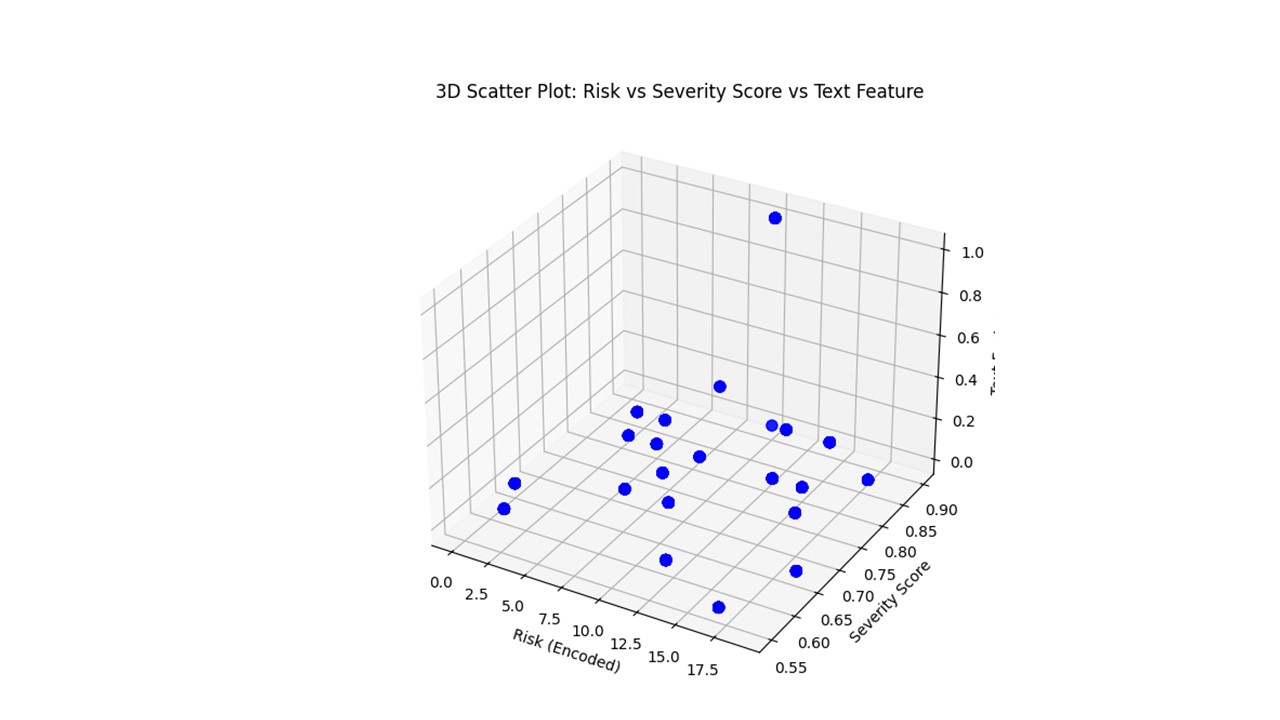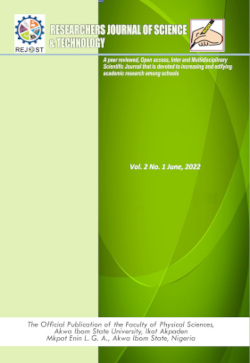Risk Severity Quantification and Prediction Framework for Road Construction Projects
Keywords:
Road Construction, Risk, Severity, Civil Engineering, Machine LearningAbstract
A road construction project involves the planning, design, and construction of roads, highways, and related infrastructure, such as bridges, tunnels, and drainage systems. Risks in road construction arise from various factors, including adverse weather conditions (e.g., heavy rain or flooding), soil instability, labor shortages, equipment failures, delays in material supply, safety hazards, and regulatory compliance issues. Managing these risks is crucial for ensuring the timely completion and safety of the project. This research addresses the critical challenges in risk management for road construction projects, where unforeseen risks often lead to delays, budget overruns, and safety hazards. The aim of the study is to develop a robust model for predicting and quantifying the severity of risks encountered in road construction projects, enabling better preparedness and decision-making. The research utilizes machine learning techniques, specifically the Multinomial Naive Bayes (MNB) classifier, to analyze and predict various risk categories such as Cost Overruns, Flooding, Design Errors, and Environmental Impact. The model was built using historical data on past construction projects, providing insights into the likelihood of risk events and their potential severity. The methodology involved data preprocessing, risk categorization, and the application of the MNB model to generate accurate predictions of risk occurrences. Evaluation metrics, including precision, recall, and F1-score, showed that the model performed effectively in predicting most of the risk categories with a high degree of accuracy of 93%. The results of the study indicate that the model can be a valuable tool for identifying and addressing critical risks like Community Opposition and Corrosion of Structures, allowing civil engineers and construction managers to allocate resources more effectively and mitigate risks before they escalate. We recommend the adoption of this risk prediction model by civil engineering teams, risk management units, and construction workers.
References
Ahmed, G., Mohamed, E., and Wael E. (2023). Machine Learning–Based Decision Support Framework for Construction Injury Severity Prediction and Risk Mitigation. ASCE-ASME J. Risk Uncertainty Eng. Syst., Part A: Civ. Eng., 2022, 8(3): 04022024
Ahmed S., Hossain, M. A., Bhuiyan M. M. I. and Ray, S. K. (2021). "A Comparative Study of Machine Learning Algorithms to Predict Road Accident Severity," 2021 20th International Conference on Ubiquitous Computing and Communications (IUCC/CIT/DSCI/-SmartCNS), London, United Kingdom, 2021, pp. 390-397.
Alateeq, M.M.; P. P., F.R.; Ali, M.A.S. (2023). Construction Site Hazards Identification Using Deep Learning and Computer Vision. Sustainability, 15, 2358. https://doi.-org/10.3390/su15032358
Almahameed, B. A., Bisharah, M. (2023). Applying Machine Learning and Particle Swarm Optimization for predictive modeling and cost optimization in construction project management. Asian J Civ Eng. https://doi.org/10.1007/s42107-023-00843-7
Ekong, B., Ekong, O., Silas, A., Edet, A., and William, B. (2023). Machine Learning Approach for Classification of Sickle Cell Anemia in Teenagers Based on Bayesian Network. Journal of Information Systems and Informatics, 5(4),1793-1808.
Cheng, C., Chen, S., Ma, Y., Qiao, F., & Xie, Z. (2024). Crash severity prediction and interpretation for road determinants based on a hybrid method. Journal of Transportation Safety & Security, 1-27.
Davor, M., Ivan, M., Nina, B. (2020). A Systematic Literature Review on the Application of Multicriteria Decision Making Methods for Information Security Risk Assessment. International Journal of Safety and Security Engineering, 10, (2), 161-174.
Edet, A., Silas, A., Ekaetor, E., Ebong, O., Isaac, E., & Udoetor, N. (2024). Data-Driven Framework for Classification and Management of Start-Up Risk For High Investment Returns. Advanced Journal of Science, Technology and Engineering, 4(2), 81-102.
Edet, A. and Ansa, G. (2023). Machine learning enabled system for intelligent classification of host-based intrusion severity. Global Journal of Engineering and Technology Advances, 16(03), 041–050
Elhishi, S., Elashry, A. M. & El-Metwally, S. (2023). Unboxing machine learning models for concrete strength prediction using XAI. Sci Rep 13, 19892. https://doi.org/10.1038/s41598-023-47169-7
Ebong, O., Edet, A., Uwah, A., & Udoetor, N. (2024). Comprehensive Impact Assess-ment of Intrusion Detection and Mitigation Strategies Using Support Vector Machine Classification. Research Journal of Pure Science and Technology, 7, (2), 50-69.
George, M. R., Nalluri, M. R. & Anand, K. B. (2022) Application of Ensemble Machine Learning for Construction Safety Risk Assessment. J. Inst. Eng. India Ser. A 103, 989–1003. https://doi.org/10.1007/s40030-022-00690-w
Jeevith H., Børge, R. (2020). Applications of machine learning methods for engineering risk assessment – A review, Safety Science, Volume 122, https://-doi.org/10.1016/j.ssci.2019.09.015.
Jenisha, D., Sujan, K., Ranjit, S., Shyam, S. K. (2023). A Review on Machine Learning approaches for Himalayan Rock Mass Classification, J. Phys.: Conf. Ser. 2629 012016
Khanum, H., Garg, A., & Faheem, M. I. (2023). Accident severity prediction modeling for road safety using random forest algorithm: an analysis of Indian highways. F1000Research, 12.
Le Duc, A., Dao Duy, L., Thai Thi Kim, C., & Bach Thi Diep, P. (2023). A machine learning approach to risk assessment of expressway bridges. Tạp Chí Khoa Học Giao Thông Vận Tải, 73(7), 661-673. https://doi.org/10.47869/tcsj.73.7.1
Lee, J.; Lee, S. (2023). Construction Site Safety Management: A Computer Vision and Deep Learning Approach. Sensors 2023, 23, 944. https://doi.org/10.3390-/s23020944
Le-Ngoc, V., Vuong-Cong, L., Pham-Bao, T., Ngo-Kieu N. (2023). Damage assessment in beam-like structures by correlation of spectrum using machine learning, Frattura ed Integrità Strutturale, 300-319.
Liao, C., Eeydzah, A., Suzila, M., And Loh, S. (2022). Intelligent Risk Management in Construction Projects: Systematic Literature Review, IEEE Access, 10.1109/ACCESS.2022.3189157
Mamdouh, A., Khaled, E., (2024). Machine learning for predicting the impact of construction activities on air traffic operations during airport expansion projects, Automation in Construction, Volume 158, 2024, 105189, https://doi.-org/10.1016/j.autcon.2023.105189.
Mostofi, F. & Toğan, V. (2023). Explainable Safety Risk Management in Construction with Unsupervised Learning. In V. Plevris, A. Ahmad, & N. Lagaros (Eds.), Artificial Intelligence and Machine Learning Techniques for Civil Engineering (pp. 273-305). IGI Global. https://doi.org/10.4018/978-1-6684-5643-9.ch011
Olena, L., Roman, O. (2023). Features of the Implementation of Artificial Intelli-gence in Construction. Journal of modern technology in materials design in construction,35(2):172-176.
Pham, B., Luan, V., Nhi, N. (2023) “Damage assessment in beam-like structures by correlation of spectrum using machine learning”, Frattura ed Integrità Strutturale, 17(65), pp. 300–319. Doi: 10.3221/IGF-ESIS.65.20.
Rodionova, M., Skhvediani, A., & Kudryavtseva, T. (2022). Prediction of crash severity as a way of road safety improvement: The case of Saint Petersburg, Russia. Sustainability, 14(16), 9840.
Sobhan, S., Anima, P., Genserik, R. (2020). Predicting and analyzing injury severity: A machine learning-based approach using class-imbalanced proactive and reactive data, Safety Science,125, https://doi.org/10.1016/j.ssci.2020.104616.
Udoetor, N., Ansa, G., Ekong, A., & Edet, A. (2024). Intelligent System for Detection of Copyright-Protected Data for Enhanced Data Security. Technology, 7(4), 58-80.
Ventura, R., Barabino, B., & Maternini, G. (2024). Prediction of the severity of exceeding design traffic loads on highway bridges. Heliyon, 10(1).
Wei, Z.; Liu, H.; Tao, X.; Pan, K.; Huang, R.; Ji, W.; Wang, J. (2023). Insights into the Application of Machine Learning in Industrial Risk Assessment: A Bibliometric Mapping Analysis. Sustainability 2023, 15, 6965. hdoi.org/10.3390/su15086965
Xianbo Z. (2023). Construction risk management research: intellectual structure and emerging themes, International Journal of Construction Management, DOI: 10.1080/1562-3599.2023.2167303
Yin, S., Liu, T., Huang, B. (2023). Research on Security Assessment Model of Marine Information System Based on Machine Learning. In: Yang, D. (eds) 2023 International Conference on Marine Equipment & Technology and Sustainable Development. METSD 2023. Lecture Notes in Civil Engineering, vol 375. Springer, Singapore. https://doi.org/10.1007/978-981-99-4291-6_11

Downloads
Published
How to Cite
Issue
Section
License
Copyright (c) 2025 Researchers Journal of Science and Technology

This work is licensed under a Creative Commons Attribution-NonCommercial-NoDerivatives 4.0 International License.




